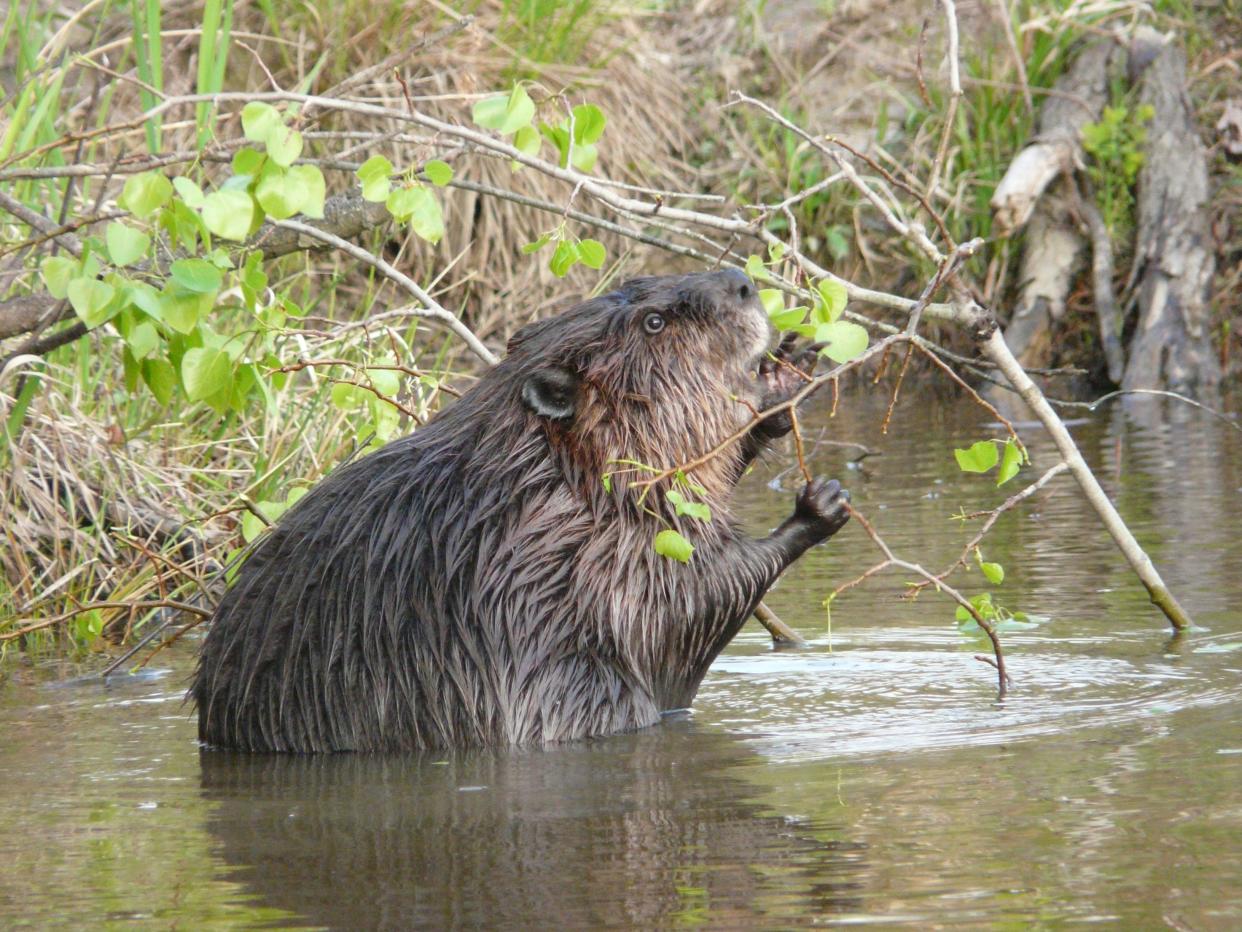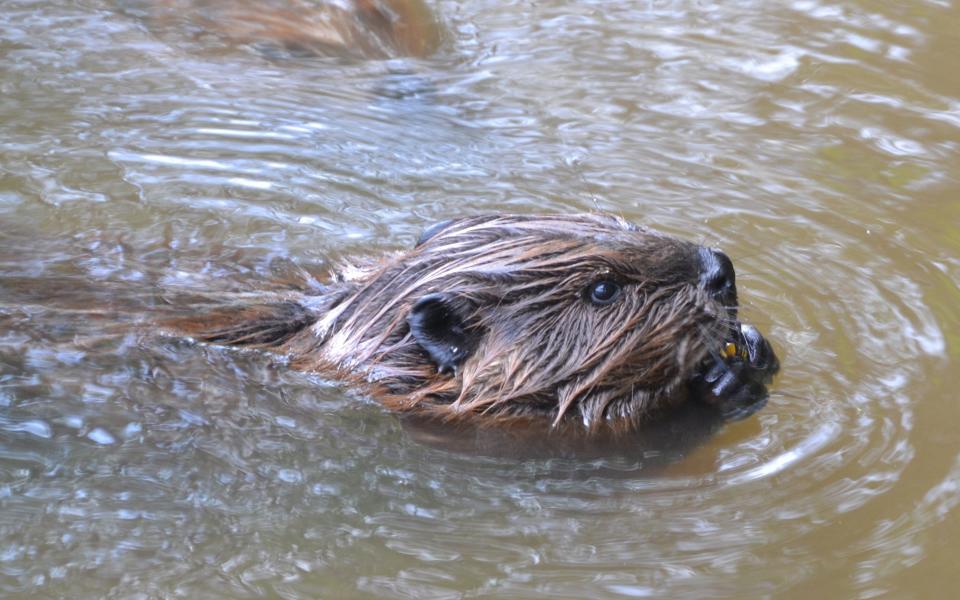What built America and can help fight climate change? Beavers, says HC prof in new book

WORCESTER - If someone were to mention the animal that built America, you would probably think of some sort of domestic farm animal like the horse or perhaps a cow - one a beast of burden during construction, the other a key economic livestock animal.
You wouldn’t think of beavers. But that’s what they are - the animals that both literally and economically built America.
“They shaped our country’s landscape and jump-started capitalism on this continent,” said Leila Philip, a professor of English at the College of the Holy Cross, who also teaches in the Environmental Studies Program, and author of "Beaverland: How One Weird Rodent Made America," which went on sale earlier this month.

North American watersheds and geology were all influenced by beavers over the millenia and the demand for beaver pelts created a transatlantic industry. However, the fur trade, which killed off millions of the animals, “really damaged the hydrology of the continent and degraded the river system - North America was once beaverland.”
Philip has spent the last six years studying beavers and their influence on our country’s history and how they can help us in the future by mitigating the effects of the climate crisis. In "Beaverland," she explains why we need beavers, dispel myths about them and how to harness them in nature-based solutions to climate resiliency.
The most important takeaway for Philip is that although she came to realize that not only have beavers shaped the continent, “they have a huge new role to play in helping us deal with the greatest crisis of our generation - climate change.”
'Greatest comeback story'
She calls beavers “the greatest comeback story” after almost being wiped out by the fur trade. The fur was the “Gore-Tex of its time - incredibly lustrous and thick with a postage-sized piece containing more hair than on a human head.” The underwool is durable, water resistant and made famous by George Washington’s tricorn hat of beaver felt.

“We need to think of them as millions of highly trained engineers,” she said, “they can bring water, they can prevent drought, fire and flooding.” In a nation where billions are spent yearly dealing with flooding, heat and drought, beavers can be used to mitigate these calamities. “It’s a low-tech process-based restoration or nature-based restoration or a natural climate action resiliency plan,” said Philip, and added that the value brought by beavers has been documented and in some cases even quantified.
“They’re a keystone species for a reason,” said Philip, as a beaver wetland has one third more biodiversity than a wetland without beavers according to studies. She cites a 2009 study which showed that beaver wetlands hold nine times more water than non-beaver wetlands. A 2021 study of available river areas in the Milwaukee River watershed, calculated that 5,473 beavers in 900 square miles of watershed in unpopulated areas could store 1.7 trillion gallons of water, annually translating to a value of $3.3 billion.
But how does an animal only a little over 3 feet in size leverage such change? When beavers move to a creek or a stream, they make a dam, causing the water to swell. Pretty soon that creek or stream becomes a series of ponds, “looking like beads on a chain if seen from above,” Philip said. Beavers will then dig canals out from those ponds so they can move in and out of the nearby woods. When it storms, the water then spreads into the land through those canals and has time to settle and sink down into the aquifer as water storage.
Around those ponds forms a marsh that acts like a huge sponge, holding water in times of drought and absorbing water in times of flood. The swamp not only holds but also cleanses water of pollutants like nitrogen, phosphorus and sediment.
Conflict arises when humans expect the river system to act in the way that they are accustomed to - staying within a contained channel with defined banks and flowing in one direction - but this is actually a degraded state of the ecosystem’s hydrology, Philip explained, as it’s not fulfilling the role of the natural hydraulic system.
“Beavers can be a pest in some cases,” she conceded, as infrastructure can be damaged by flooding due to a dam suddenly appearing down river. While a housing development cannot be moved, there are a number of areas where water can be allowed to move naturally such as recreational areas. People may be used to seeing a hiking trail in a certain place and can learn to be more tolerant of seeing that hiking trail flood occasionally.
Philip said, “At my local land trust, they often break the dam because they want a certain trail to be dry. We need to let go of a certain level of control that we’re used to - let beavers do what they do best.” Naturally, one cannot have beavers flooding roads and railroads, in which cases beaver deceivers or pond levelers can be used. There are organizations dedicated to providing education and services for non-lethal means of managing beavers.
Dispelling myths on beavers
In the book, Philip makes a point to dispel the common myths about beavers that often lead to their removal: They don’t feed on trees but need those to build their dams; they don’t rapaciously eat trees but gnaw on them to keep their ever growing teeth down; they don’t warm the water and harm fish (in fact, beaver dams actually increase populations of salmon by creating ponds of deeper and colder waters for trout and salmon); they don’t breed like rodents but more slowly and stabilize their population. Like others, she used to believe the fact that they ate trees was the rationale for taking them out but they eat underwater vegetation and the underlayer of bark.
Beavers, according to her, are much more valuable to us helping with climate change than as a pelt. “I still have a lot of respect for trappers," she added, who have used their knowledge to undertake conservation work. If a beaver must be removed, she said, it should be by a fur trapper who does it humanely and uses the pelt and meat rather than someone killing it and throwing it away.
"Beaverland" is ultimately about climate change, which is an overwhelming subject, but Philip felt that “stories of hope and resilience will help us find our way into a collective future.” She emphasized that we are at an interesting moment in terms of thinking of animal behavior - humans need to reset their relationship to the natural world but one needs guidance for that. “Beavers are a wonderful lens to look not just at American history but how we view the natural world and be better off for it.”
This article originally appeared on Telegram & Gazette: Holy Cross professor Leila Philip pens book on beavers' role in US

